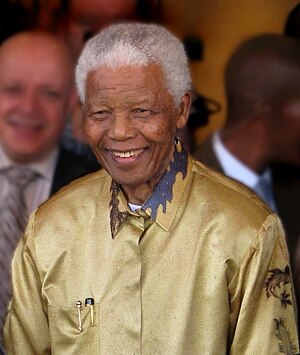The next of "Shitekata" and "Wakikata ", introduce
"Hayashikata".
In Noh, it is “Hayashikata" to be in charge of the music of the
chanting of a Noh text. “Hayashikata” consists of four kinds of musical
instruments, for example, a flute (“Nohkan”), a small hand drum, a hand-drum (“Odutumi”)
and a drum. These are called “Yon Byoshi” (it means Four beats). The
performance plays a position by one. Players cannot play other one's charge. Each
musical instrument is divided into each specialty, and traditional technic is
inherited and succeeds to a high technique and style. By the performance, a drum
takes the lead of the time. However, the performance that a drum is not
contained in, a hand-drum leads a small hand drum. Not only percussionist play
a musical instrument, but also they shout, for example, "yo-i",
"ya", "ha" and "iyaa". At the time of the
presentation of the Noh, the charge of each musical instrument sits in
"Hayashiza" of the stage rear one by one and plays percussionist.
O.K. then, move
to the introduction of each musical instrument. At first, about a flute.
A flute used with Noh is called a Noh pipe
and made of the bamboo. Though it is the only melody musical instrument, in “Yon
byoshi”, it mainly play rhythm than a melody in the Noh. The technic of such a
flute is a characteristic of the “Hayashikata” of the Noh. Because percussionist
do not make much of a melody, the Noh pipe is different in the position of length
and the hole in each one. Because it is not tuned, pitch and musical scales are
different. Styles that exist now are “Morita style” and “Fujita style”.
The next about a small hand drum.
This is so-called "Tutumi"
and controls time. Because moisture is indispensable to leather, for the
beautiful tone, percussionist breathe during a performance and soak saliva. The
small hand drum is a musical instrument needing the attention consistently.
“Odutumi” is a hand drum of
the closing a bargain to control time. The sound of “Odutumi” is fixed at the
strength and weakness when beat and whether control leather after having beaten.
Hand-drum is hit with the finger of the right hand putting the left knee. It is
necessary to dry leather to make a firm sound and roasts it by a charcoal fire
before a performance for approximately one hour. “Kazurano style”, “Takayasu
style”, “Okura style”, “Ishii style” and “Kanze style” are exist now.
References
